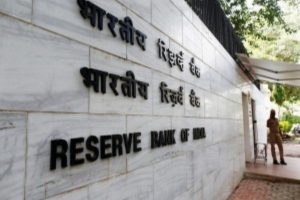Book: Sonal Mansingh – A Life Like No Other; Author: Sujata Prasad; Publisher: Penguin; Pages: 220; Price: Rs 599
Few Indian classical dancers have risen to such fame and glory as the widely-adored Sonal Mansingh. A recent biography attempts to capture the life and times of this classical dancer and lives to tell the many known tales of her illustrious life.
Advertisement
Titled, "Sonal Mansingh: A Life Like No Other", the book has been authored by civil servant and writer Sujata Prasad. The author first met Sonal Mansingh in 2012 and as soon as the latter opened the door of her house in Defence colony, she could sense that the charm which had transfixed audiences in the 1960s, '70s and '80s was still intact.
The author asked her the permission to pen her biography but Sonal Mansingh doubted her seriousness and remained non-committal. Over time, however, they met regularly and thus the ground for this biography was set.
For starters, Sonal Mansingh was born in Mumbai, second of three children to Arvind and Poornima Pakvasa, a noted social worker from Gujarat and Padma Vibhushan winner in 2004. Her grandfather was Mangal Das Pakvasa, a freedom fighter, and one of the first five Governors of India. It is thus no surprise that the astounding interest of Mansingh in classical dance came at a very early age.
We learn that she started learning Manipuri dance at age four, along with her elder sister, from a teacher in Nagpur, then at age seven she started learning Bharatanatyam from various gurus belonging to the Pandanallur school, including Kumar Jayakar in Bombay.
Mansingh was married to former Indian diplomat Lalit Mansingh, which did not turn out to be a very happy acquaintance. "Even though there was an underlying disquiet, a feeling that something was not quite right, the fact that my marriage was collapsing seemed outside the realm of the plausible. My friends tried to warn me about a bevy of young women in Lalit's life, but I continued to live in anaesthetised haze, keeping myself insulated from the steamy details, managing somehow a Zen-like forbearance," Sonal Mansingh is quoted as saying in the book.
Even though the author has attempted to provide details by using the question-answer format many a time, the scenes from her marriage and the particular events that led to the divorce remain hidden.
The phase after the divorce was, in Mansingh's own words, humiliating, banal and low. The cruellest whiplash, according to the author, came from her guru Kelucharan Mohapatra.
"I reached out to him as soon as I got back. A guru is like a father. I expected him to empathise with me, to help me deal with the trauma of separation, but he behaved with monstrous egotism. He not only mocked me, but kicked my head when I bent down to touch his feat," Mansingh tells her biographer.
The pain and trauma she went through must have been acute, to say the least but, like most biographies of today, the soul of this book lies in the words of Mansingh whereas its objectivity and relevance to the truth are shadowed by her towering personality.
Nonetheless, one needs to give full credit to author Prasad for her ability to create a romantic and sublime setting throughout these pages. Her flawless narration and her careful choice of words convey more in 220 pages than some biographies do in 500.











